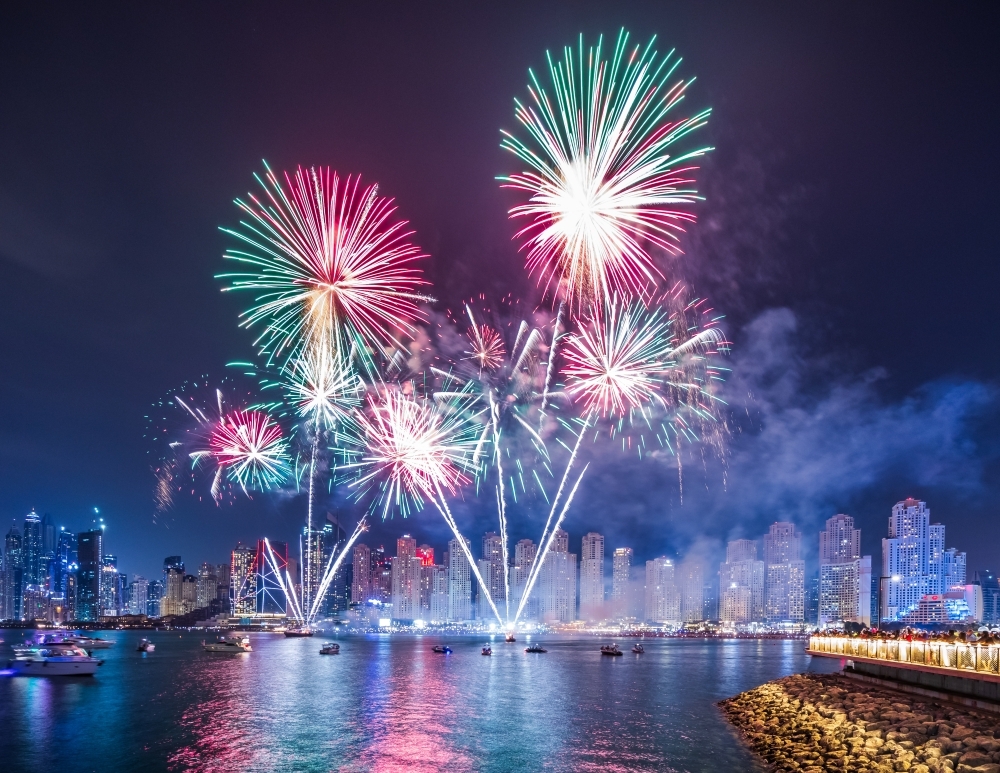Palm Jumeirah Mall
For over a decade, living on Palm Jumeirah meant accepting a trade-off. You gained waterfront luxury and some of the world’s most prestigious addresses, but you gave up day-to-day ease. Grocery shopping meant crossing back to the city. A spontaneous dinner required planning. Meeting friends for coffee involved a 20-minute drive each way. The Palm was iconic, but it wasn’t quite a neighbourhood.
When Nakheel Mall opened in 2019, it changed that equation completely. Suddenly, Palm Jumeirah residents could pop out for daily necessities, meet for lunch, or browse shops without factoring in traffic, drive times, or parking. More importantly, the mall represented a different philosophy altogether – instead of Dubai’s typical focus on scale and spectacle, Nakheel Mall was designed around everyday living rather than destination retail.
A Different Kind of Dubai Mall
In a city where malls compete on superlatives – the largest, the most luxurious, the most elaborate – Nakheel Mall took a deliberately different approach. At 350,000 square feet, it's substantial without being overwhelming. The design feels more Mediterranean coastal than Dubai mega-complex, with open-air sections that take advantage of the Palm's waterfront location and sea breezes that make outdoor dining comfortable for much of the year.
The anchor tenant is Waitrose, which tells you everything about the mall's positioning. This isn't about bargain hunting or entertainment complexes – it's about quality and convenience for residents who are accustomed to premium experiences. The supermarket stocks everything from everyday essentials to specialty items that previously required trips to Marina Mall or Mall of the Emirates. For Palm residents, being able to pick up essentials in five minutes represents a fundamental shift in daily quality of life.
The retail mix reflects this residential focus. Instead of international flagship stores competing for tourist attention, you'll find boutiques, health and beauty services, and lifestyle brands that serve daily needs rather than special occasion shopping. The pharmacy, dry cleaner, and salon aren't afterthoughts – they're recognition that the Palm needed the infrastructure of a real neighbourhood, not just another collection of luxury shops.
Also Read: The View at The Palm Observation Deck
The Dining Evolution
Perhaps the transformation is more obvious in the casual dining options. Previously, Palm dining leaned heavily on hotel restaurants with hotel prices, and while there were always a few favourites scattered along the trunk, variety often meant heading to Marina or JBR. Nakheel Mall introduced casual dining that actually feels casual – places where you can grab a quick lunch, have a coffee catch-up, or enjoy dinner without the formality that characterised much of the island’s earlier options.
The outdoor dining areas take advantage of the Gulf views and create spaces that feel more like a seaside town than a shopping centre. During the cooler months, these terraces fill with residents who've walked from nearby towers or villas – something that rarely happened before the mall existed. The atmosphere shifts throughout the day, from business breakfast meetings to family lunches to evening drinks, creating the kind of natural pace that healthy neighbourhoods require.
What's particularly interesting is how the restaurants respond to both residents and visitors without creating obvious divisions. The quality standards remain high enough for the Palm's international resident base, while the atmosphere stays relaxed enough for families with children or casual meetings. This balance is harder to achieve than it appears, and it's part of what makes the mall feel integrated into the community rather than imposed upon it.
Also Read: Facts about Palm Jumeirah
Beyond Retail
The mall's impact extends well beyond shopping and dining. It created the Palm's first real community gathering space – somewhere residents bump into neighbours, children play, parents chat, and the social connections that define neighbourhood life can develop naturally. The central plaza hosts events and activities that bring residents together in ways that weren't possible when the Palm was primarily individual towers and villas connected by roads.
For families with children, the mall provided something the Palm had been missing – places for children to safely spend time that weren't beach or pool-related. The play areas and family-friendly restaurants gave parents new ways to keep children engaged and socialise without leaving the island. This seemingly small change had significant effects on the resident community, particularly for families who had felt somewhat isolated by the Palm's previous limitations.
The mall also attracted new service providers who recognised the potential of the resident market. Medical facilities, educational services, and personal care providers opened locations within or near the mall, creating a cluster of daily life infrastructure that further reduced residents' dependence on mainland Dubai.
Also Read: Palm Jumeirah Shopping Mall
Property Impact and Market Evolution
The mall's opening had measurable effects on Palm property values and rental markets. Properties within walking distance commanded premiums that reflected the added convenience, whilst the overall appeal of Palm living increased for potential residents who had previously been deterred by the inconvenience factor. Real estate agents report that the mall frequently comes up in property viewings as a key selling point, particularly for families and residents who prioritise daily convenience alongside luxury.
The rental market saw particularly strong impacts. Short-term vacation rentals could now offer guests the option of self-catering with easy food supply access, and long-term residents found their quality of life significantly improved. Property management companies noted reduced turnover rates among tenants, suggesting that the convenience factor helped residents stay longer rather than relocating for practical reasons.
Also Read: Palm Jumeirah Tourist Attractions
Rethinking What Matters
Nakheel Mall represents Dubai's evolution from spectacular destination development to sustainable community building. It demonstrates that even in a city famous for breaking records and creating icons, sometimes the most valuable addition is something as simple as a neighbourhood shopping centre that lets residents live practical lives in extraordinary surroundings.
The mall's success is proof that convenience and community infrastructure aren't afterthoughts – they're essential components of creating places where people actually want to live long-term. In transforming the Palm from a destination into a neighbourhood, Nakheel Mall proved that luxury living requires more than picturesque views and premium finishes. It requires the simple ability to buy something as simple as milk without planning a journey.



